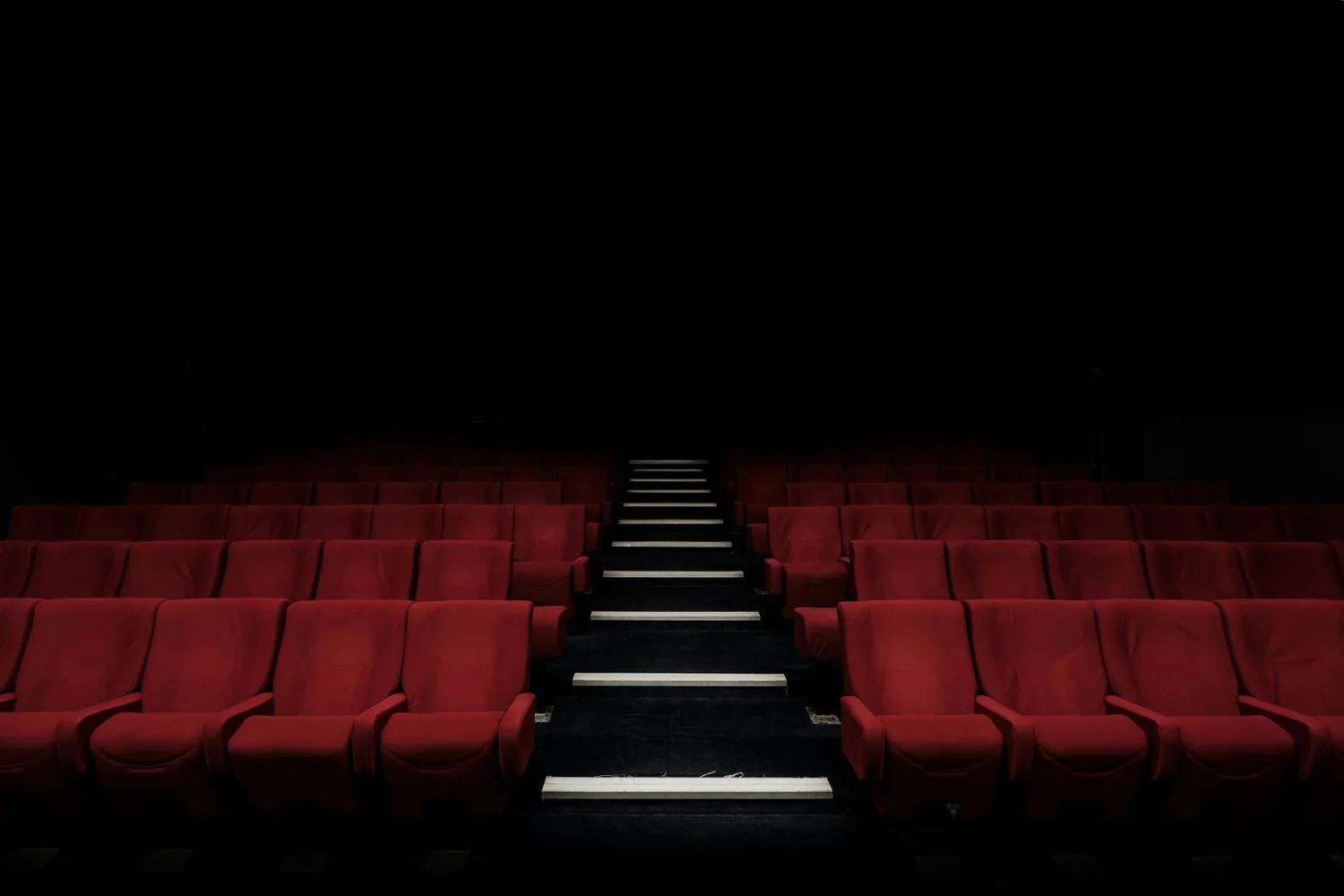Image: https://unsplash.com/photos/red-cinema-chair-evlkOfkQ5rE
by Nancy Fernandez
In a world that constantly pushes us toward busyness, productivity, and performance, movies give us something rare: stillness. The lights dim, the chatter fades, and for a couple of hours, our attention narrows to a story. It’s one of the few times many of us allow ourselves to be fully present — to watch, feel, and think without interruption. Cinema becomes more than entertainment; it becomes a quiet kind of therapy.
The connection between storytelling and mindfulness runs deep. Both ask us to slow down and observe. Both invite empathy, introspection, and a sense of shared humanity. Every film, no matter how lighthearted or intense, holds the potential to teach us something about ourselves — if we’re willing to listen. That, in essence, is the philosophy behind Every Movie Has a Lesson: every story carries a seed of wisdom we can take into our own lives.
Stories as Mirrors
We often underestimate how much movies reflect our emotional landscapes. When we watch a character grapple with loss, love, anxiety, or purpose, we see echoes of our own struggles. Think of Good Will Hunting, where the breakthrough comes not from logic but from compassion; or Inside Out, which turns emotional turmoil into something not to be feared, but understood. These stories don’t just entertain — they model healthy ways of processing emotions.
What makes movies powerful is that they meet us where we are. A comedy might give us permission to laugh at our worries. A drama can let us cry for someone else’s pain and, in doing so, lighten our own. In that sense, every film is a safe space for catharsis. The empathy we feel for fictional characters becomes a rehearsal for empathy toward ourselves and others.
A Lesson Beyond the Screen
Of course, movie lessons don’t end when the credits roll. They’re invitations — subtle nudges that remind us to care for our emotional and mental wellbeing in real life. That’s where mindful living begins: not in grand gestures, but in the small choices we make to restore balance and calm.
For some, that might mean journaling after a powerful film. For others, it could be creating an evening ritual that allows the mind to unwind — a cup of tea, soft lighting, or a few moments of deep breathing. Some people turn to nature or meditation; others explore holistic wellness tools that help the body and mind decompress together.
In France, for instance, wellness communities have embraced natural methods such as plant-based remedies and CBD as part of their relaxation routines. A site like wellnessmarket.fr curates trusted products designed to promote calm, focus, and balance — the same emotional harmony we often see celebrated in films that teach mindfulness and acceptance. The goal isn’t escapism; its restoration, the same kind we seek in a good story.
Why Our Brains Love Narrative
Neuroscience supports what cinephiles have felt for decades: stories heal. When we engage with narrative, our brains release oxytocin — the “empathy hormone” — which deepens emotional connection. This chemical response helps explain why a film like The Shawshank Redemption can leave us feeling hopeful or why Eternal Sunshine of the Spotless Mind lingers long after the screen fades to black.
Stories also activate multiple areas of the brain at once: sensory regions, emotional centers, and memory networks. That’s why a scene can feel so real we practically inhabit it. It’s a full-body experience — one that anchors us in the present moment. That’s mindfulness in action, achieved through narrative.
Even when a film takes us to far-off worlds — from Star Wars’ galactic rebellion to Avatar’s luminous jungles — we’re ultimately exploring our inner landscapes. The lessons are universal: courage, loss, redemption, love, identity. These stories give shape to feelings we might not yet have words for.
The Mindful Movie Watcher
Turning movie-watching into a mindfulness practice doesn’t require special training. It’s about watching with awareness — not multitasking, not scrolling, but being fully there. Before starting a film, pause to set an intention. Maybe you’re watching to feel inspired, to reflect on resilience, or simply to escape gently into someone else’s story.
During the film, notice how it makes you feel. Where in your body do you feel tension or calm? What themes resonate most? When the story ends, instead of rushing to the next distraction, sit with the emotion. Write down one lesson or quote that stood out. Over time, these moments build a library of insight that can inform your daily life.
Lessons Worth Living
Some films practically beg to be lived out, not just watched. Eat Pray Love reminds us to chase self-discovery; The Secret Life of Walter Mitty encourages us to step beyond fear; Groundhog Day teaches the quiet miracle of growth through repetition. Even blockbusters like Black Panther or Wonder Woman offer lessons about identity, community, and courage.
Each of these stories contains a mirror — not to a fantasy, but to potential. They whisper reminders of what we value, what we’ve forgotten, and what we might still become. That’s why they stay with us.
When we connect those lessons to mindful living, we move from passive consumption to active reflection. A movie isn’t just a break from life — it becomes a tool for living it better.
From Reflection to Action
The next time you finish a film, don’t just close your laptop or walk out of the theater. Ask:
What emotion did this story awaken in me?
What part of my life does it reflect or challenge?
What can I carry forward from this experience?
Pair that reflection with a small act of self-care. Maybe it’s going for a walk, calling a friend, or brewing something soothing while you think. The key is integration — letting story and life overlap until the lesson becomes habit.
In a noisy, distracted world, mindfulness doesn’t always come naturally. But stories help us practice it effortlessly. They invite us to sit still, feel deeply, and emerge changed. That’s decompression — not through escape, but through connection.
The Final Scene
Movies remind us that being human is both complicated and beautiful. They help us laugh at our chaos and weep for our hopes. When we watch with presence, every film becomes a mindfulness exercise — an exploration of who we are beneath the noise.
Whether we find peace in a quiet indie drama or a superhero epic, the message is the same: slow down, feel more, live intentionally. That’s the real lesson behind the reel — and perhaps the most important one of all.



